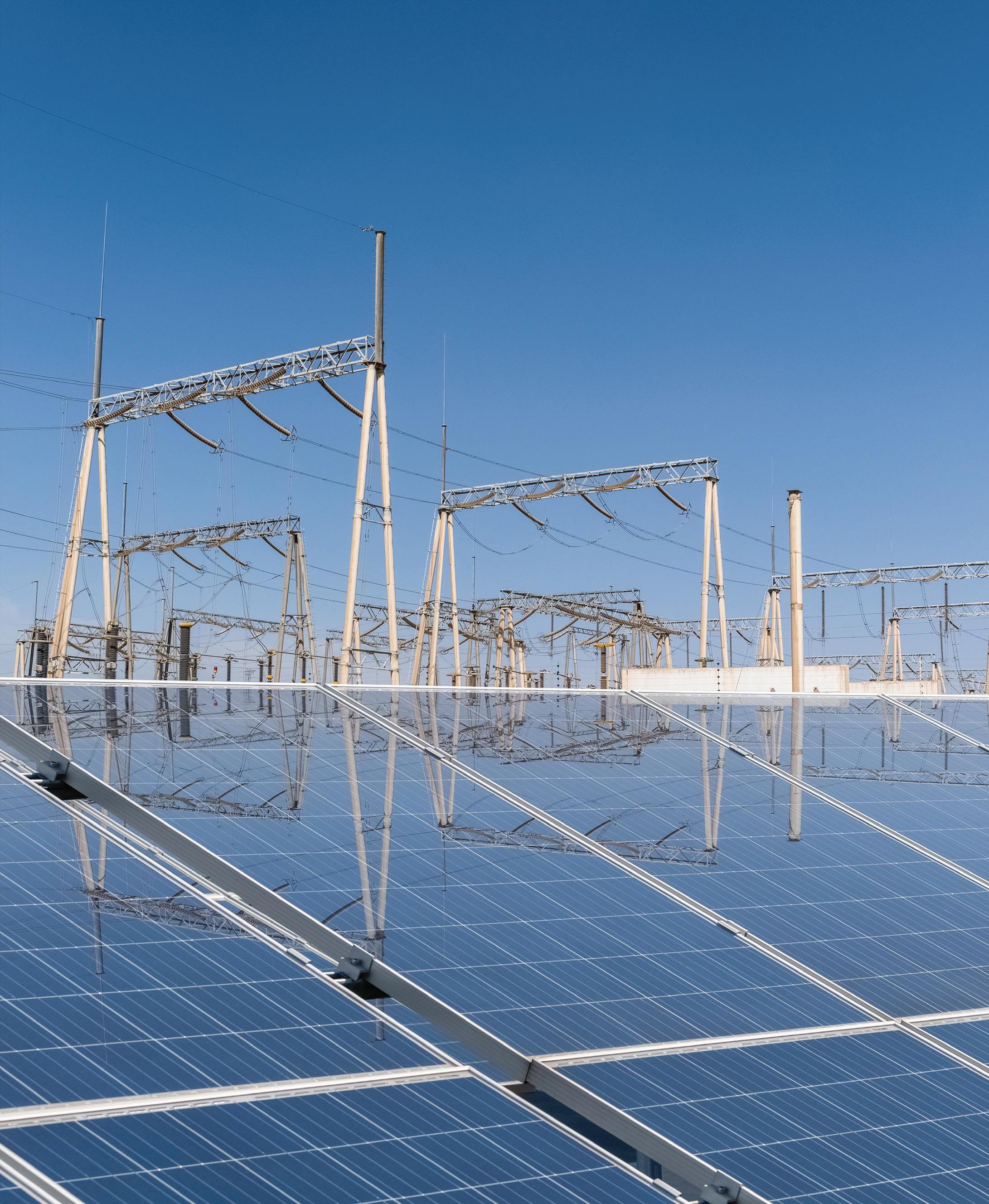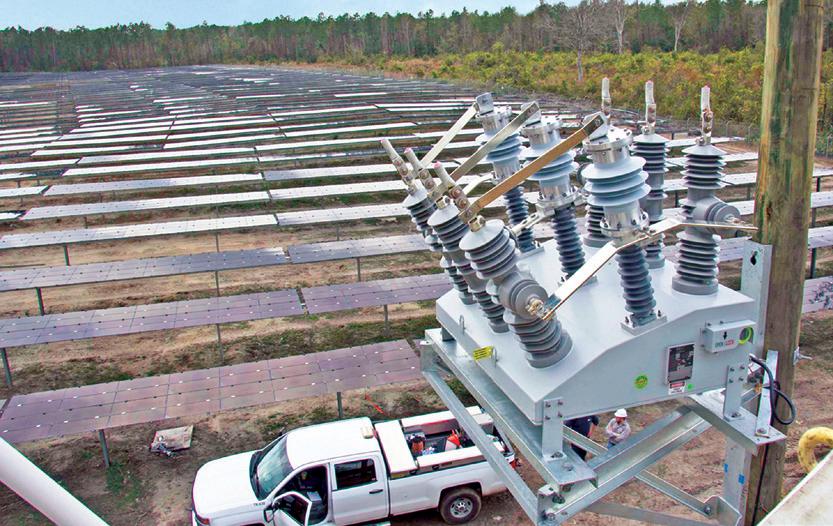
4 minute read
Innovative Switching Helps Solar Connect to the Grid
Innovative Switching Helps Solar Connect to the Grid
by Karl Fender
Advertisement
Application Overview
According to Solar Energy Industries Association’s (SEIA) latest solar market insight report, the U.S. installed 5.7 gigawatts (GWdc) of solar PV capacity in Q2 of 2021, reaching over 108 gigawatts of total installed capacity. This is enough to power 18.9 million American homes! While the vast majority of all installations taking place are on residential systems, nearly 55 gigawatts of large-scale solar projects are currently in operation with another 110 gigawatts under construction or development. This number is only expected to increase, as electrical utilities pursue 100 percent renewable, clean energy and look to leverage investment tax credits.
Because solar energy has and will continue to represent a large portion of many utilities’ Distributed Energy Resource (DER) portfolio, there is an urgent need to ensure its safe and efficient integration into the grid. Many solar farms are connected to weak areas of distribution system (15 to 38 kV); this poses a number of challenges for solar developers when energizing the farm through an interconnecting transformer, including: • High inrush currents that result in unacceptable voltage sags on the feeder • Relatively high switching frequency that reduce the life of the transformer • Potential ferro-resonance • The cost of transformer no-load losses at night
IEEE Industry Standards
It is critical that existing and new DER installations meet the interconnection requirements specified by the utility. IEEE Std 1547-2018, IEEE Standard for Interconnection and Interoperability of Distributed Energy Resources with Associated Electric Power System Interfaces, establishes criteria and requirements for interconnection of distributed energy resources with electric power systems. Section 7.2.2 of the standard states, “When the point of common coupling (PCC) is at medium voltage, the DER shall not cause step or ramp changes in the rms voltage at the PCC exceeding 3 percent of nominal and exceeding 3 percent per second averaged over a period of one second.”
Minimizing Voltage Sags & Extending Transformer Life
Energizing a DER interconnecting transformer results in a harmonic rich magnetizing inrush current that can exceed 10 times the transformer’s rated full load current. , placing mechanical and thermal stresses on the transformer. This high inrush current can lead to unacceptable system voltage drops and ferroresonance issues that will negatively impact power quality and result in premature failure of the transformer.
Increasingly, solar developers are being required to meet specific power quality requirements mandated by the local utility. Connecting to weak distribution systems makes meeting these requirements more difficult. To minimize the impact on customers sharing the line, many utilities have started adhering to IEEE 1547-2018, limiting rms voltage change to 3 percent. For developers experiencing voltage sags in excess of the utility limits, a switching method must be implemented to minimize inrush currents and resulting voltage dip.
Energy Cost Savings
Transformer no-load losses are caused by magnetizing current needed to establish flux in the core of a transformer. Because solar generating sites are not producing energy at night, they become loads on the system as the system supplies power to maintain the magnetizing current.
It has been estimated that, even on a small 3 MVA transformer deenergized 8 hours per day, a $7,500 savings can be achieved assuming a 20-year service life and 10 percent required rate of return. Because DER asset owners are looking to maximize return on investment, there is significant value in an effective solution that will allow for daily, safe switching of the transformer.

Switching Technologies
The following switching solutions are most often used to address the above interconnection challenges:
1. Controlled Switching Technology
This solution involves utilizing a controlled switching device to switch the transformer. Controlled switching utilizes electronic controls and knowledge of residual flux of transformer core to help the switching device close on a specified point on the voltage waveform to minimize disturbances. This approach, however, depends on many variables such as control voltage, ambient temperature, mechanism wear knowledge, transformer residual flux by phase, etc. To maintain consistency, this (typically expensive) approach requires continued maintenance by qualified personnel to maintain reliability. Low reliability of sensitive electronic controls is a known issue in these remote application environments.
2. Closing Resistor Technology
An alternative approach to mitigating inrush current is to utilize a closing resistor to insert resistance into the circuit prior to the main contacts of the vacuum interrupter being closed. The resistor provides a soft energization of the transformer, limiting the inrush currents. If properly sized for the application, the closing resistor solution is a mechanical, highly reliable, and repeatable switching solution. In addition to being easier to install, operate, and maintain, this switching technology is more cost-effective compared to other solutions. Additionally, no sensitive electronics and sensors are used, resulting in a more reliable system.
Conclusion
Developers and utilities are becoming increasingly tasked with integrating solar energy and other renewables to the grid. To minimize customer impact, many utilities are adhering to IEEE Std 1547-2018, requiring the DER asset owner to limit RMS voltage drop to 3 percent when energizing the interconnecting transformer. Developers who experience RMS values in excess should consider a device that minimizes voltage sags, extends transformer life, and allows for daily in and out switching to eliminate no-load losses. While controlled switching is an option, a device utilizing closing resistor technology can offer a more reliable, cost-effective solution.
Karl Fender is National Sales Director at Southern States, which designs and manufactures high-voltage switching devices to support grid resiliency and reliability for electrical utilities worldwide.




